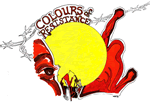States of Unrest: Resistance to IMF policies in poor countries
View summary below or click here for a link to the full text.
Summary
Claims by James Wolfensohn, Horst Köhler, and the Western media that protests against the International Monetary Fund (IMF) and World Bank are led by students and anarchists from the rich global north demonstrates an insultingly partial outlook on the world. Conservative estimates suggest that mass demonstrations against these institutions have taken place in at least 13 countries across the global south since protests against the World Trade Organisation (WTO) in Seattle last November.
These protests demonstrate strong feeling against the harm caused by IMF policies and demonstrate how IMF-imposed conditions undermine governments’ ability to govern. Significantly, all these protests took place after the Annual Meetings in Washington last year, when the IMF announced its new poverty-reduction mandate and renamed structural adjustment programmes.
Since the WTO meeting in Seattle in November 1999, there have been over a million civilians protesting across 13 countries on more than 50 separate occasions. Estimates indicate that more than half of these protests ended in the deployment of riot police or army; that more than 300 people have been injured, 10 killed and more than 160 arrested. All of the protests have been calling for an end to reforms prescribed by the IMF. Below are details of those protests, with a description of the policies they have tried to stop.
Country summaries
Argentina
A series of strikes and protests against the Government’s continued IMF reforms end in violence. Trade unions say the measures have led to unemployment and rural communities complain of a decline in public services.
Bolivia
Escalating protests against the privatisation of water and a 200 per cent price hike lead to serious riots and calls for the Government to end IMF policies. The President is forced to call a state of emergency and soldiers are deployed on the streets of Cochabamba. At least six people are killed.
Brazil
More than a million people vote against IMF reforms in a mock referendum, and thousands follow the vote with a mass demonstration called Cry of the Excluded.
Colombia
Public sector redundancies and wage cuts (part of IMF austerity measures) lead to a 24-hour general strike.
Costa Rica
Privatisation of the telecommunications sector, prescribed by the IMF, results in demonstrations and at least one death.
Ecuador
Delayed negotiations with the IMF lead to a deepening of the economic crisis. A mass movement of 40,000 people, opposing further IMF reforms, leads to the storming of Congress and subsequently a bloodless military coup. Despite a new President, the IMF continues with its reforms, leading to continued riots and civil unrest. The situation remains unstable.
Honduras
Strikes across the country demand an end to IMF-required public service cuts.
Kenya
A peaceful demonstration calling for debt relief and an end to IMF conditions ends in violence.
Malawi
Protesters demonstrating against IMF conditions are stopped by the police when they try to march on the Consultative Group meeting of donors.
Nigeria
The newly elected President faces a general strike against the deregulation of the oil sector and fuel price hikes (part of the IMF programme). Protesters condemn his adherence to IMF policies, against the wishes of his electorate.
Paraguay
Participants in the 48-hour general strike against privatisation of telephones, water and railways are told this is non-negotiable as it is part of the IMF package.
South Africa
Encouraged by the IMF, the Government is rushing through liberalisation laws in an attempt to attract foreign investment. The measures are met with sustained protests from trade unions.
Zambia
Demonstrators picket the hotel where IMF staff are meeting government officials, claiming SAPs have led to cuts in health services and that privatisation has left people unemployed.
